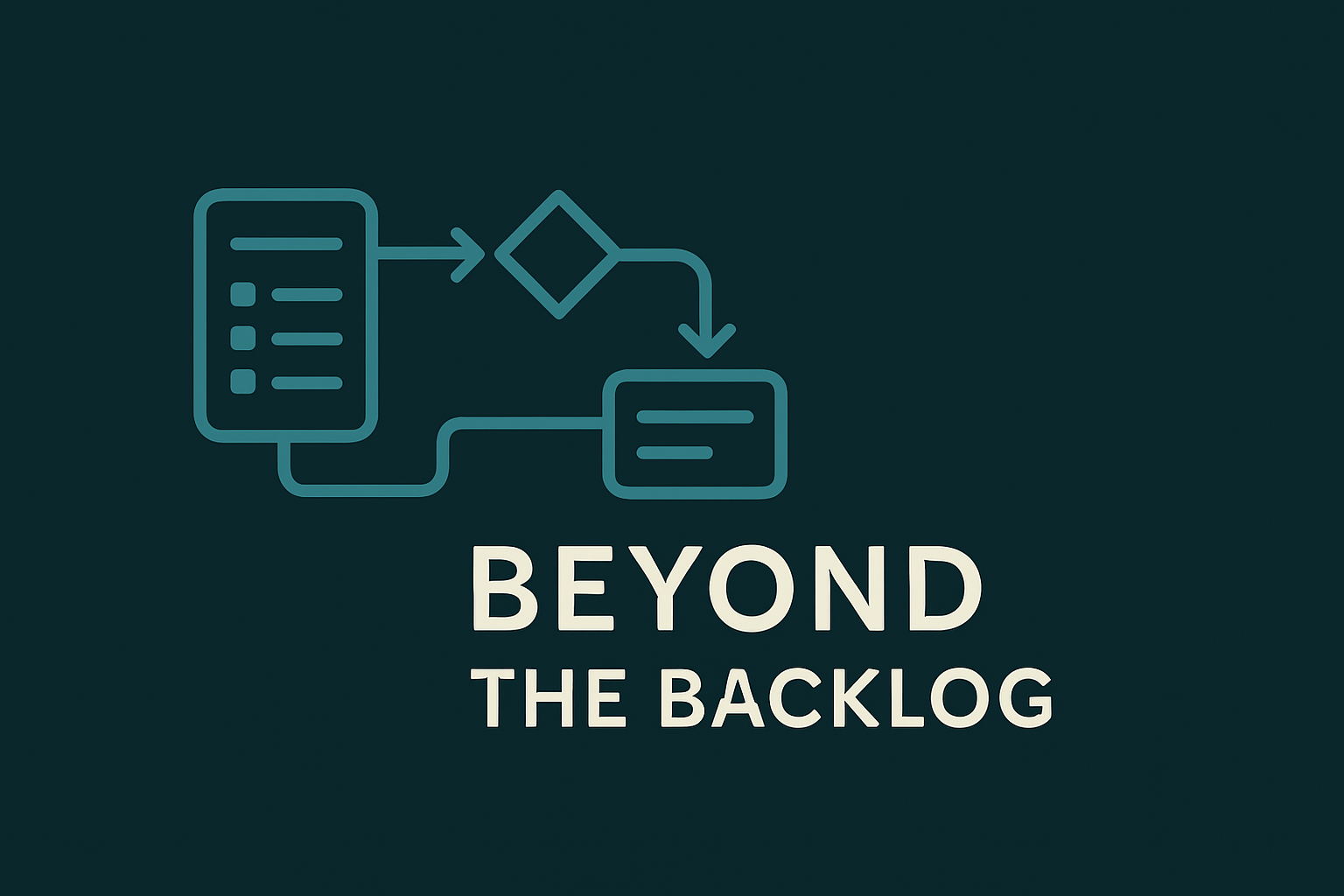Cultivating Safety at Scale: A Playbook for Product Leaders

If you didn’t catch my previous newsletter, I dove into cultivating strong, psychologically safe, empowered product teams as a product manager. That post is a precursor to this one, which focuses on cultivating psychological safety as a product leader.
Psychological Safety Primes You for Success
Cultivating psychological safety is even more important as a product leader than as a product manager. It’s paramount to impress on your PMs the need to cultivate safety on their teams for all the reasons I detailed in my last post—and equally critical to cultivate safety in your interactions with them so that they feel safe to make mistakes, acknowledge them, and learn from them.
As a product leader, it’s your job to set strategy and make higher‑level decisions about the product and the org. You can’t do that effectively without the best information from the PMs running boots‑on‑the‑ground efforts. They’re closest to validation, feasibility analysis, and the trade‑offs that determine which path should be taken.
If PMs don’t feel safe to surface alternate ways to solve a problem—or feel constrained to deliver a predetermined solution rather than explore the problem space—the outcomes will be worse, and you’ll be under‑equipped to manage up to senior leadership.
In short: cultivating a fully safe environment requires giving up some control of solutions in favor of outcomes, but there’s no other option. Psychologically safe product teams are free to explore the best ways to solve problems, surface unexpected findings without fear of repercussion, and see their insights incorporated into overall product direction. If you want 10x outcomes, safety isn’t a nice‑to‑have—it’s the only path.
Toolkit: Cultivating Psychological Safety as a Product Leader
Below are practical ways to cultivate psychological safety as a product leader. Have methods that aren’t listed? Drop them in the comments!
1) Give PMs outcomes and guiding policies—not features
To get the best outputs, get comfortable passing desired outcomes to product teams so they can figure out the best path. Trust PMs with problems and define the success metrics that matter. Back their discovery, help evaluate options, and hold the bar on outcomes and moving the needle on success metrics—not on delivering a specific feature.
When solutions must be constrained, use guiding policies to define the edges of the sandbox while preserving creativity.
Recently, I led a highly experimental workstream on AI redlining. We didn’t know if we’d reach fully automated redlining or hit an upper bound of what was possible. Guiding policies set expectations for any viable solution: it had to be easy to onboard customers to, scalable across document types, and (ideally) capable of improving over time. Those policies set direction without over‑constraining the team’s approach—and the solutions got better as a result.
Toolkit Tidbits
- Position work as outcomes
- "Increase margins on the core product by 20%."
- "Reduce onboarding drop‑off by 5%."
- Use guiding policies to set parameters
- "The solution must scale across customer use cases."
- "Focus on margin expansion in Segment A."
2) Normalize "I might be wrong"
Your words carry extra weight. Model fallibility so PMs don’t feel pressure to be right 100% of the time. Stay curious and make heavy use of the phrase "I might be wrong." Talking in this way showcases that you know you don't always have the best ideas and need the PMs on your team and (by extension) their teams, to investigate and get the best outcomes.
When it turns out you were wrong: own it. Having a hypothesis is good; acknowledging when it isn’t borne out is great. Then mine the learning from the failure and move forward.
Also, invite challenge. Your PMs are closer to customers and evidence. Ask them to poke holes in your ideas and show you where the data points another way.
Toolkit Tidbits
- "I might be wrong, but I wonder if X?"
- "Where might my current thinking be wrong?"
3) Protect PMs from whiplash and dictated solutions
When executive input lands mid‑work stream, channel it to your PMs in a way that avoids whiplash. If it changes the problem framing, work with your PMs to revisit evidence and determine whether the approach should change—or whether the current path still holds.
Resist the urge to pass down solutions amid changing direction. It can be tempting to start to dictate specific solutions when it feels like leadership expects a certain implementation. Resist that urge and keep passing problems to PMs - then work the evidence together to chart a path forward. Approaching changing direction in this way equips you to manage up effectively:
"Thanks for surfacing Idea A. PM1 dug in with their team and we learned X. Given that, we’ll proceed in Y direction based on the evidence."
Once a decision is made, back it—and the evidence behind it. Executive alignment on outcomes and evidence tends to produce alignment on solutions.
Toolkit Tidbits
- Act as a sieve between leadership and your teams.
- Pass on relevant information that helps them achieve outcomes.
4) Encourage public communication and debate; farm for dissent
Product is a team sport. Early in an initiative, broaden the audience to get additional perspectives from cross-functional colleagues. More perspectives tend to yield stronger solutions. As you collaborate, model how to disagree well by respecting your colleagues and keeping a learners mindset. Your colleagues may know more than you do! Label hunches as hunches and push for experimentation and spikes to generate the evidence needed to validate or invalidate proposed approaches.
As a leader, it’s your job to farm for dissent—to create the space where contrary views can be voiced safely. Sometimes, this is as simple as asking for contradictory viewpoints and seeing what comes up. Other times, you may need to probe more: "If we end up being unsuccessful with this approach, why would that be?"
Toolkit Tidbits
- Disagree well
- "I hadn’t thought about it like that. Can you say more about what you’re seeing?"
- Farm for dissent
- "What other ways could we approach this?"
- "Does anyone disagree with this approach?"
- "If we end up being unsuccessful with this approach, why would that be?"
- Encourage experimentation
- "Let’s time‑box an experiment and review the evidence together at our next meeting."
5) Run blameless postmortems on product decisions (OKRs, goals, strategy)
Product is probabilistic. Things won’t always go as planned—across vision, strategy, and execution. That’s why learning loops matter at the leadership level too. Make retro a rhythm for strategy, annual/quarterly OKRs, and major decisions. Conducting regular retros provides space to pivot when the evidence warrants it and learn from unexpected outcomes.
Ask (and answer) questions like: "What was our hypothesis for this strategy?" and "What would we do differently next time, knowing what we know now?" Your strategic decisions will get sharper over time.
Toolkit Tidbits
- A simple OKR retro template:
- Context → Hypothesis → What happened → Contributing factors → 2–3 changes we’ll make
6) Give clear, direct, and actionable feedback
Safety isn’t the absence of critique; it’s the presence of useful, kind critique. Ambiguous feedback creates anxiety and second‑guessing. Instead, describe what you observed, the impact, and what to try next—plus why it matters (to the team, org, and your PMs' growth).
Clear feedback, delivered consistently, builds trust. It signals care and raises the bar without triggering defensiveness. Done well, it makes risk‑taking safer—because people know they’ll get supportive, specific input afterward that helps them improve.
Toolkit Tidbits
- Anchor in observed behaviors, not intent
- "In yesterday’s review, the slides were so dense stakeholders struggled to follow—next time, aim for fewer points per slide."
- Connect to outcomes
- "When we skip clarifying the success metric up front, prioritization gets harder later. Let’s start each review by stating the metric."
- "You’re deep in this domain—which is great—but next time take a step back and add context so everyone can have your knowledge and follow the awesome work your team is doing."
- Balance candor with care
- "I’m sharing this because I want you to succeed at leading larger initiatives."
- Make it two‑way
- "Was my feedback clear? How could I deliver it more helpfully for you?"
Safety Breeds Innovation
Psychological safety is not coddling; it’s an operating system for increasing speed and quality. When PMs can question assumptions, surface inconvenient truths, and run bounded experiments without fear, the organization learns faster. Faster learning compounds into better bets, better products, and better business outcomes.
Safety also raises the bar. Clear outcomes with guiding policies, normalized fallibility, protection from thrash, public debate, blameless retros, and direct feedback create a culture where people both dare and deliver. Autonomy is paired with accountability; curiosity with evidence; dissent with respect.
If you want more innovation: reduce fear, increase clarity, and reward learning. The rest—velocity, creativity, and results—tend to follow.
What strategies have you used to increase psychological safety on the teams you lead? I’d love to hear what’s worked (and what hasn’t) in the comments!
If you're enjoying this newsletter, please share with friends and encourage them to subscribe!





